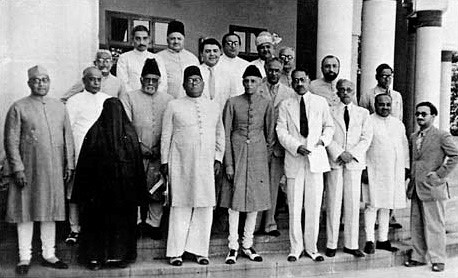Description

Disclaimer: Copyright infringement not intended.
Context
- The Lahore Resolution holds significant historical importance in the creation of Pakistan and is commemorated as Pakistan's National Day on March 23 every year.
- This resolution laid the groundwork for the eventual establishment of an independent state for India's Muslims.
Details
Lahore Resolution of 1940
- Adopted by the All-India Muslim League during its general session in Lahore from March 22 to March 24, 1940.
- Formally called for the creation of an independent state for India's Muslims.
- Although the term 'Pakistan' was not explicitly mentioned in the resolution, it is celebrated as the precursor to the formation of Pakistan.
- The resolution emphasized the need for geographically contiguous units where Muslims were in the majority to form autonomous and sovereign states.
Adoption and Significance
- In 1956, Pakistan officially adopted its first Constitution on March 23, transforming from the Dominion of Pakistan to the Islamic Republic of Pakistan.
- The Minar-e-Pakistan, built between 1960 and 1968 at the site of the Lahore Resolution, commemorates this historic event, with the resolution's text inscribed at its base.

Interpretation and Debate
- The Lahore Resolution's wording, particularly regarding the "North-Western and Eastern Zones of India" and "Independent States," has led to debates about whether it called for one or two separate nations.
- Despite debates, the Muslim League and its leader, Muhammad Ali Jinnah, asserted that the resolution aimed at creating two separate countries for Hindus and Muslims.
Lead-up to the Lahore Resolution
- Demand for Representation: Until the early 1930s, many Muslims had been advocating for better representation and protection of their rights within the Indian Union. The separate electorate granted to them in the Government of India Act, 1935, was seen as a positive step in this direction.
- Growing Separatist Sentiments: However, as the decade progressed, there was a noticeable increase in voices within the Muslim community calling for a complete break from India. These sentiments were fueled by various factors, including perceived marginalization and fears of domination by the Hindu majority.
- Khaksar Tragedy: The Lahore session of the Muslim League, where the Lahore Resolution was adopted, took place shortly after the Khaksar tragedy. Members of the Khaksar, a Muslim group advocating for India's independence, were shot at by the British on March 19 in Lahore, resulting in casualties. This event likely intensified separatist sentiments among Muslims.
- Jinnah's Address: The Lahore session witnessed a landmark address by Muhammad Ali Jinnah, who would later become known as Quaid-e-Azam of Pakistan. Jinnah's speech during this session played a pivotal role in cementing his position as the leader of the movement for a separate Muslim state. He eloquently presented the case for why a separate state for Muslims was necessary, outlining his vision for Pakistan.
- Transformation of Jinnah: Historian Stanley Wolpert, in his book "Jinnah of Pakistan," highlights the significance of Jinnah's address in Lahore. Wolpert suggests that Jinnah's speech marked a definitive shift in his stance towards advocating for Pakistan, effectively ending any prospects for a unified independent India.
- Criticism and Opposition: Despite the adoption of the Lahore Resolution, it faced criticism from some Indian Muslims, including prominent figures like Abul Kalam Azad and the Deoband ulema led by Husain Ahmad Madani. They advocated for a united India and opposed the idea of partition.

Observance in New Delhi
- Pakistan National Day is celebrated in New Delhi at the Pakistan Embassy complex, usually attended by foreign diplomats and Indians.
- The event includes the playing of national anthems of both countries, speeches by the Pakistan High Commissioner and the chief guest.
- Plans for celebrating Pakistan National Day in New Delhi this year are underway, with the event scheduled for March 28, aiming to foster diplomatic engagement between India and Pakistan.
|
PRACTICE QUESTION
Q. The lead-up to the Lahore Resolution was marked by a complex interplay of political, social, and historical factors, ultimately culminating in the adoption of a resolution that would shape the course of South Asian history. Discuss. (150 words)
|








